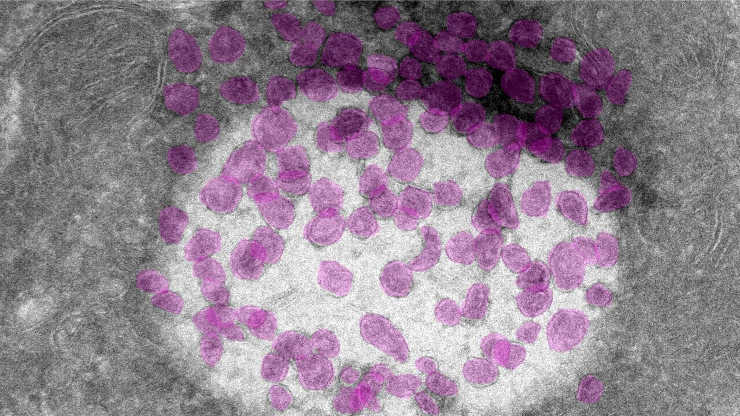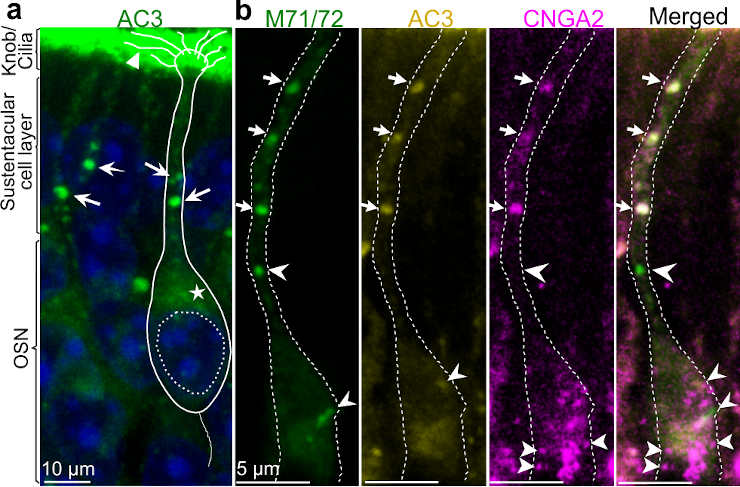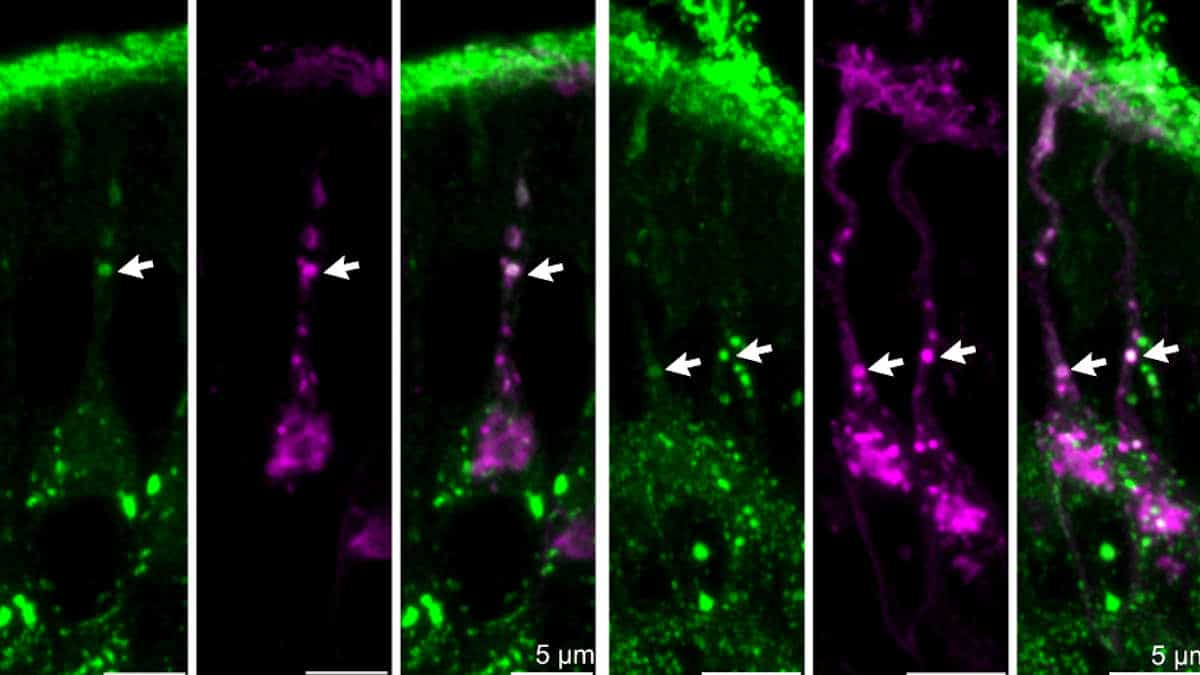Researchers in Sweden have found an organelle, a previously unidentified cellular component, inside the neurons responsible for our ability to smell. The finding might have repercussions for future studies on COVID-19 symptoms like impaired smell sense.
The cellular component called an organelle that the researchers have found inside nerve cells is something that has never before been seen. The researchers have named the recently discovered organelle the multivesicular transducosome.
“A prerequisite for finding a treatment for impaired sense of smell is to first understand how the sense of smell works”,
said Professor Staffan Bohm of the Department of Molecular Biology at Umeå University. The discovery was made possible by Ume University’s one-of-a-kind microscopy infrastructure.
Odor Signals And The Multivesicular Transducosome

Credit: Devendra Kumar Maurya
Organelles are like distinct workstations within cells that can be likened to the various body organs; consequently, various organelles perform various functions within the cell. The majority of organelles are shared by various cell types, but some organelles have particular functions that are found only in particular cell types.
The name organelle is derived from the idea that these structures are parts of cells, much like organs are to the body, thus organelle, with the suffix -elle being a diminutive. Organelles come in a variety of shapes and sizes, especially in eukaryotic cells. They include structures of the endomembrane system (such as Golgi apparatus, endoplasmic reticulum, and the nuclear envelope) as well as mitochondria and plastids.

AC3 immunofluorescence in a coronal OE section imaged by confocal microscopy. The OE cell layers are indicated in the margin.
The soma, nucleus, axon, dendrite, knob and cilia of one OSN are outlined. AC3 immunofluorescence is present in cilia (arrowhead), the soma (asterisk) and dendritic puncta (arrows).
Credit: Maurya, D.K., Berghard, A. & Bohm, S. CC-BY
Long projections, known as cilia, protrude from olfactory nerve cells into the nasal cavity, where they contain the proteins that bind odorous substances and trigger nerve impulses to the brain. Transduction is the process by which odor signals are transformed into nerve impulses, and the newly discovered organelle only contains transduction proteins.
The transductosome’s job is to store and maintain the segregation of transduction proteins until they are required. Olfactory stimulation causes the organelle’s outer membrane to burst, releasing the transduction proteins so they can get to the cilia of the neuron and causing smell to be perceived.
Retinitis Pigmentosa 2
The researchers also found that a protein known as retinitis pigmentosa 2 (RP2), which is normally known to control transduction in the eye’s photoreceptor cells, is carried by the transductosome. Retinitis pigmentosa is a type of eye disease that harms the light-sensitive cells in the eye and can be brought on by mutations in the RP2 gene.
“A question for further research is whether the transductosome has a role in vision and whether it is present in brain neurons that are activated by neurotransmitters and not light and smell. If so, the discovery may prove even more significant,”
noted Staffan Bohm.
Devendra Kumar Maurya discovered the multivesicular transducosome using a new technique called correlative microscopy. The technique combines electron microscopy and confocal microscopy to image a cell’s internal structures as well as the location of various proteins at the same time.
Devendra’s method development, which allowed the technique to be used to analyze intact neurons in tissue sections, was critical to the discovery.
References:
- Maurya, D.K., Berghard, A. & Bohm, S. A multivesicular body-like organelle mediates stimulus-regulated trafficking of olfactory ciliary transduction proteins. Nat Commun 13, 6889 (2022).
- Murat, Dorothee; Byrne, Meghan; Komeili, Arash (2010-10-01). Cell Biology of Prokaryotic Organelles. Cold Spring Harbor Perspectives in Biology. 2 (10): a000422. doi:10.1101/cshperspect.a000422
